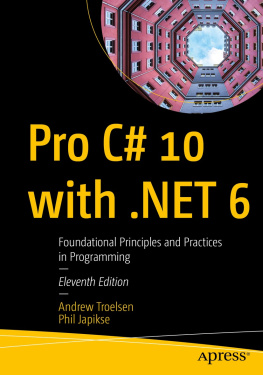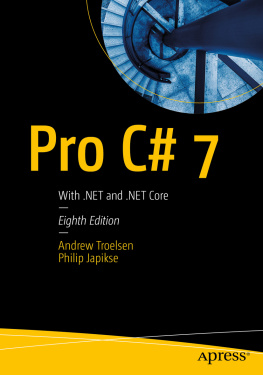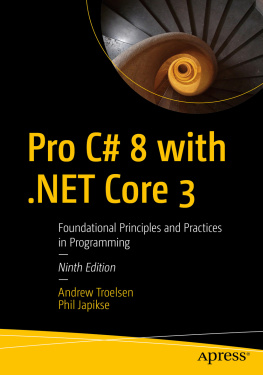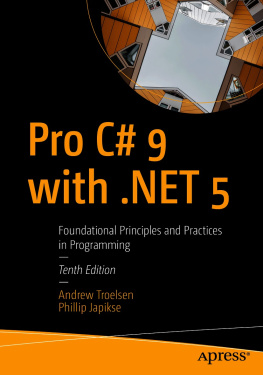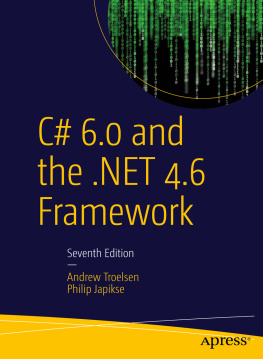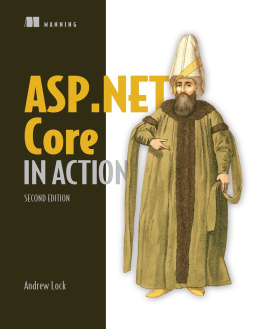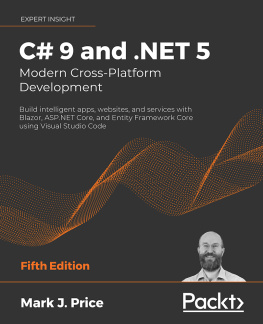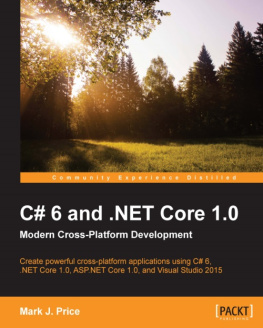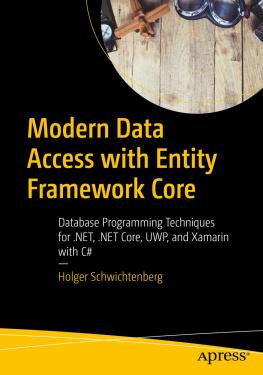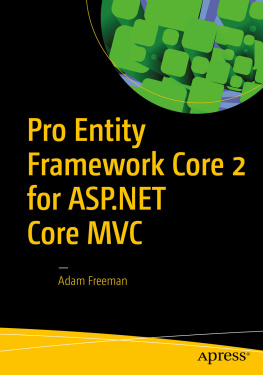Choose Your Own Adventures
From the very first editions that Andrew wrote, and the ensuing editions since I have taken over the book, the goal has been (and always will be) to help you be productive and informed software engineers. This book, like C# and the .NET platform, continues to grow with every release. This provides an opportunity for you, the reader, to choose your own adventures. Whether you are new to software development or a seasoned veteran, this book has content to take you to the next level.
For the veteran C# developer, this book keeps you up to date with the latest that C# and .NET has to offer. Starting with C# 7, the section headers indicate when a feature was introduced or updated. Quickly scanning the table of contents highlights the new features so you can quickly read up on them and take them for a spin. This book can also serve as a reference manual, with code samples ready to help you complete that task that isnt quite muscle memory.
For the beginner, this book uses an organized approach to teaching C# and object oriented programming. Once you are comfortable with those topics, you can exercise them by skipping ahead and building application ASP.NET Core or Windows Presentation Foundation. Not ready to dive into data access? All of the code for each chapter is provide in the GitHub repo, so you can skip ahead in the book and use the provided code samples to explore in the order you choose.
As an author, I dont know what your individual needs are at any single point in time. As a CTO and Chief Architect, I know what our organization and software engineers need for the long haul. Not only for the software they build, but for their careers as the move towards tech lead and architect positions. My goal is to provide you with the same information that I provide my team and my organization. Chances are you dont need everything in this book right now. Chances are also good that you will at some point in your development cycles. So, choose your own adventure, grab what you need to finish your task at hand, and know that well be ready for you when you come back to tackle another section.
The Source Code
The source code for this book is hosted on GitHub in the https://www.Github.com/apress/pro-c-sharp-10 repository.
An Overview of This Book
Pro C# 10 with .NET 6 is logically divided into nine distinct parts, each of which contains a number of related chapters. Here is a part-by-part and chapter-by-chapter breakdown of the text.
Part I: Introducing C# and .NET 6
The purpose of Part I is to acclimate you to the nature of the .NET platform and various development tools used during the construction of .NET applications.
Chapter : Introducing C# and .NET 6
This first chapter functions as the backbone for the remainder of the text. The primary goal of this chapter is to acquaint you with a number of .NETcentric building blocks, such as the Common Language Runtime (CLR), Common Type System (CTS), Common Language Specification (CLS), and Base Class Libraries (BCL). Here, you will take an initial look at the C# programming language, namespaces, and the .NET assembly format.
Chapter : Building C# Applications
The goal of this chapter is to introduce you to the process of compiling C# source code files. After installing the .NET SDK and runtimes, you will learn about the completely free (and fully functional) Visual Studio Community edition as well as the extremely popular (and also free) Visual Studio Code. You learn how to create, run, and debug .NET C# applications using both Visual Studio and Visual Studio Code.
Part II: Core C# Programming
The topics presented in this part of the book are quite important because you will use them regardless of which type of .NET software you intend to develop (e.g., web applications, desktop GUI applications, code libraries, services, etc.). Here, you will learn about the fundamental data types of .NET, work with text manipulation, and learn the role of various C# parameter modifiers (including optional and named arguments).
Chapter : Core C# Programming Constructs, Part 1
This chapter begins your formal investigation of the C# programming language. Here, you will learn about the role of the Main() method, top-level statements, and numerous details regarding the intrinsic data types of the .NET platform and variable declaration. You will work with and manipulate textual data using System.String and System.Text.StringBuilder . You will also examine iteration and decision constructs, pattern matching, narrowing and widening operations, and the unchecked keyword.
Chapter : Core C# Programming Constructs, Part 2
This chapter completes your examination of the core aspects of C#, beginning with creating and manipulating arrays of data. Next, you examine how to construct overloaded type methods and define parameters using the out , ref , and params keywords. You will also learn about the enum type, structures, and nullable data types, and you will understand the distinction between value types and reference types. Finally, you will learn about tuples.

